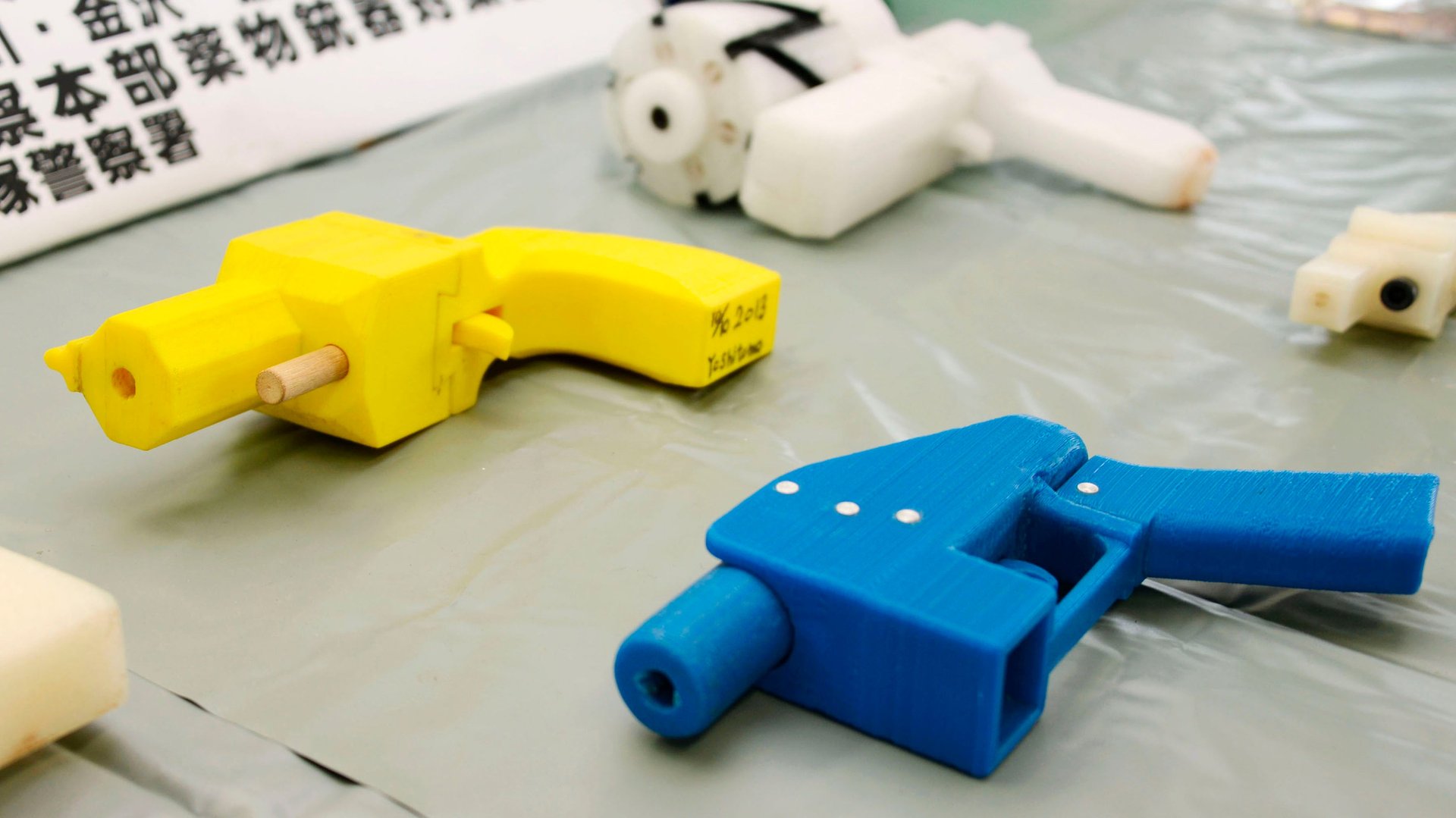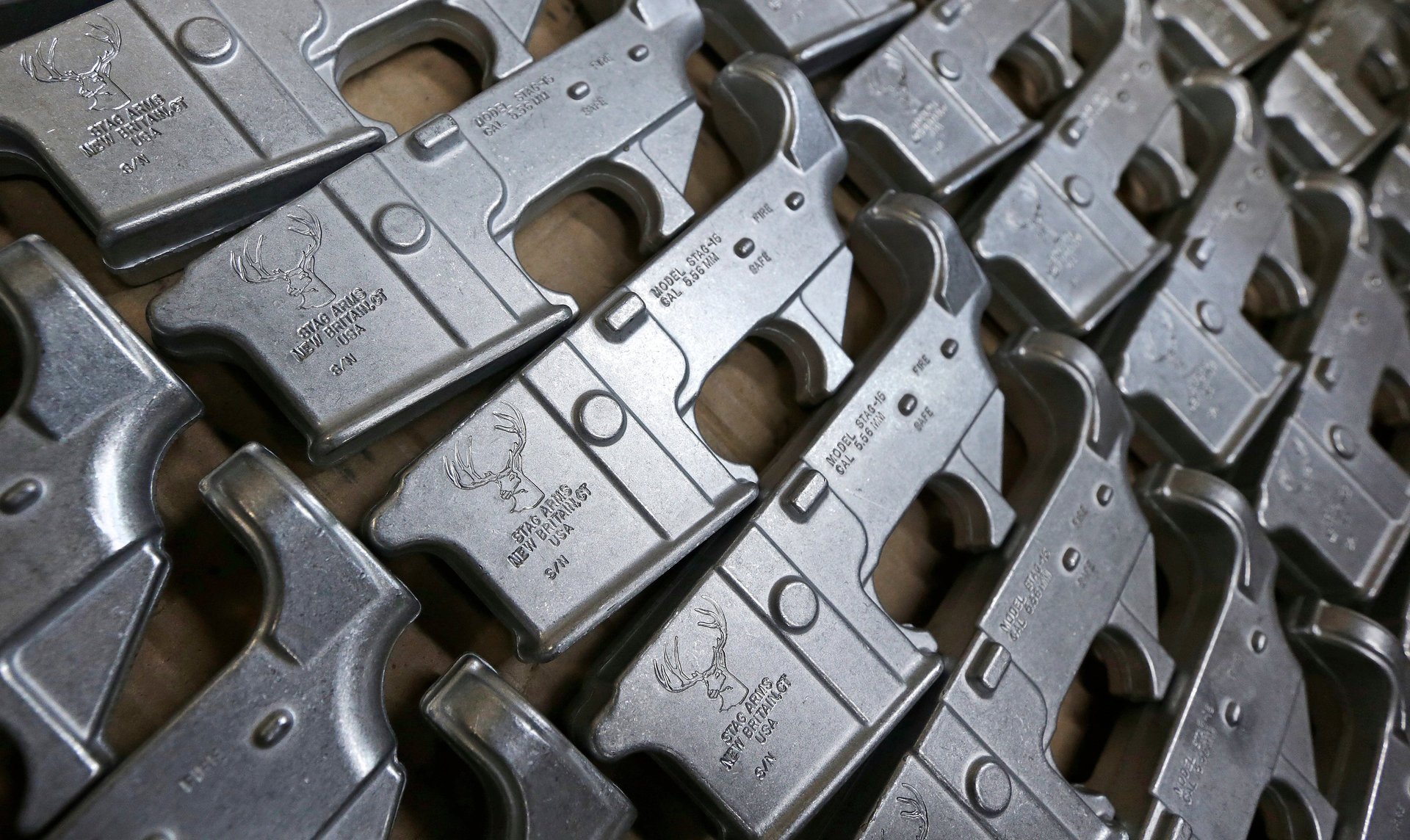3D printed guns are here, but that’s not what we should be worried about
Update, Aug. 1: A US federal judge in Seattle has temporarily blocked the distribution of 3D-printed gun blueprints. A new hearing has been scheduled for Aug. 10.


Update, Aug. 1: A US federal judge in Seattle has temporarily blocked the distribution of 3D-printed gun blueprints. A new hearing has been scheduled for Aug. 10.
Tomorrow, theoretically, building an untraceable gun in the US will be about as easy as downloading a song from iTunes.
From Aug. 1, you’ll be able to log onto websites like Defense Distributed and download a design file that you can use to produce a working firearm on a $200 3D printer in a couple hours. Thousands have already accessed such files. Unsurprisingly, this has gun-safety activists worried. Even the president is “looking into” it.
And while it really will be that easy to gain access to the plans, barring some last minute intervention—a years-old lawsuit preventing the distribution of these design files was settled recently, with the Trump administration allowing the files to fly free across the web starting tomorrow—these guns are not really what should be concerning people.

The gun attracting the most attention is the plastic, blocky “Liberator” gun, designed by guns-rights activist Cody Wilson, the founder of Defense Distributed. In reality, it’s not wildly different from a practice of building improvised firearms that’s always been legal in the US. As the Bureau of Alcohol, Tobacco, Firearms and Explosives’ (ATF) website says, you do not need a license to build your own firearm. (However, the device you build has to trigger a metal detector, and there are some other stipulations about the types of guns you can build. Individual states, such as California, also have their own regulations on registering homemade weapons.)
The Liberator is concerning as it’s made of plastic, and cannot be detected easily by metal detectors (which would break ATF regulations if not modified), or traced through any firearms databases. Anyone—a criminal, a terrorist, a 13-year-old with a laptop—could theoretically get their hands on one if they can access a 3D printer. But it’s also a single-shot, disposable device that really can only be fired once, and even then, could potentially misfire and cause injury to the shooter if the print wasn’t perfect.
The real concern is not the Liberator, but more what it represents. 3D printers, especially consumer-grade ones, are still in their infancy, and are gradually getting more sophisticated. There are printers that can print metallic parts, even quite durable ones, but we’re still a ways away from being able to download a file for, say, a Beretta pistol, press a button, and let the printer do its job. (And even then, we’d still probably have to buy bullets, given that 3D printers require heat to adhere metal particles together.)
That may well be possible in the future. There are high-quality metal printers today that cost $100,000, having cost five times that just a few years earlier. The Trump administration’s decision to allow the Liberator to be downloaded could potentially pave the way for durable, repeat-use guns to be designed, printed, and shot. And even if the lawsuit is eventually overturned, how do you recall or prevent files that have already been downloaded from being printed by bad actors?
But the reality is that there been automated systems that can print and design weaponry for years. Computer-aided design systems, such as computer numerical control (CNC) milling machines, have existed in some capacity since the 1980s. You can even buy a professional one right now for less than a good metal 3D-printer—although actually trying to build something on one without years of metalworking practice may be a challenge.

Defense Distributed, however, sells its own CNC mill, called the Ghost Gunner, that costs $2,100 shipped anywhere in the US. The site also sells what are called “80%” lower receivers, effectively an unfinished version of the main body of a gun, which the ATF does not deem illegal. Using the milling machine the site sells, you can turn the receivers into firearms, which again, if you’re making them at home in the US, is completely legal. There are websites dedicated to showing you how to build your own, legal, AR-15 rifle—the same type of gun used in the Parkland school shooting, among many others.
The availability of 3D files for a single-use plastic gun may or may not fundamentally change the way firearms are built and distributed, but if you’re concerned about the automated production of unregistered guns, that reality has been here for years.
Correction (Aug 3): An earlier version of this post stated that the Ghost Gunner cost $350, which is actually the deposit and shipping costs. After shipping, the milling machine in fact costs $2,100.